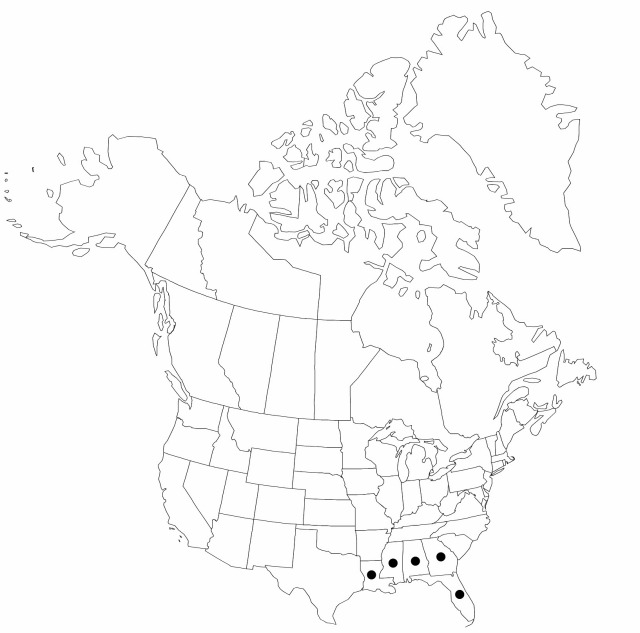Difference between revisions of "Fimbristylis schoenoides"
Enum. Pl. 2: 286. 1805.
imported>Volume Importer |
imported>Volume Importer |
||
| Line 65: | Line 65: | ||
|publication year=1805 | |publication year=1805 | ||
|special status=Introduced;Illustrated | |special status=Introduced;Illustrated | ||
| − | |source xml=https:// | + | |source xml=https://bitbucket.org/aafc-mbb/fna-data-curation/src/2e0870ddd59836b60bcf96646a41e87ea5a5943a/coarse_grained_fna_xml/V23/V23_189.xml |
|genus=Fimbristylis | |genus=Fimbristylis | ||
|species=Fimbristylis schoenoides | |species=Fimbristylis schoenoides | ||
Latest revision as of 20:39, 5 November 2020
Plants annual, cespitose, 10–35(–40) cm, glabrous; rhizomes absent. Leaves polystichous, mostly spreading to ascending; sheath margins entire; ligule present, complete; blades narrowly linear, to 1 mm wide, flat to shallowly involute, margins distantly scabrid, surface glabrous. Inflorescences: spikelets 1, terminal or 2–3 in simple anthela longer than broad, laterals subsessile; scapes narrowly linear, coarsely ribbed, distally compressed; involucral bracts usually 1 per spikelet, exceeding or exceeded by it. Spikelets yellowish, mostly turgidly ovoid, 5–8 mm; fertile scales broadly ovate, 2–3 mm, apex obtuse, entire, midrib excurrent or not. Flowers: stamens 3, styles 2-fid, flattened, fimbriate. Achenes near white to pale brown, lenticular-obovoid to obpyriform, 2 mm, appearing smooth under 10–20X magnification, under higher power finely longitudinally ribbed, with fine, isodiametric pits in vertical lines. 2n = 10.
Phenology: Fruiting summer–fall, all year in south.
Habitat: Moist sands or sandy peats of roadsides, ditches, flatwoods clearings, savanna, and particularly, disturbed low, open areas
Elevation: 1–100 m
Distribution

Introduced; Ala., Fla., Ga., La., Miss., tropical Asia, Africa.
Discussion
Fimbristylis schoenoides is an unusual Fimbristylis for us, with a smooth, “eleocharis-like” appearance. The plants are mostly low and spreading-culmed, glabrous annuals of Asian origin.
Selected References
None.
